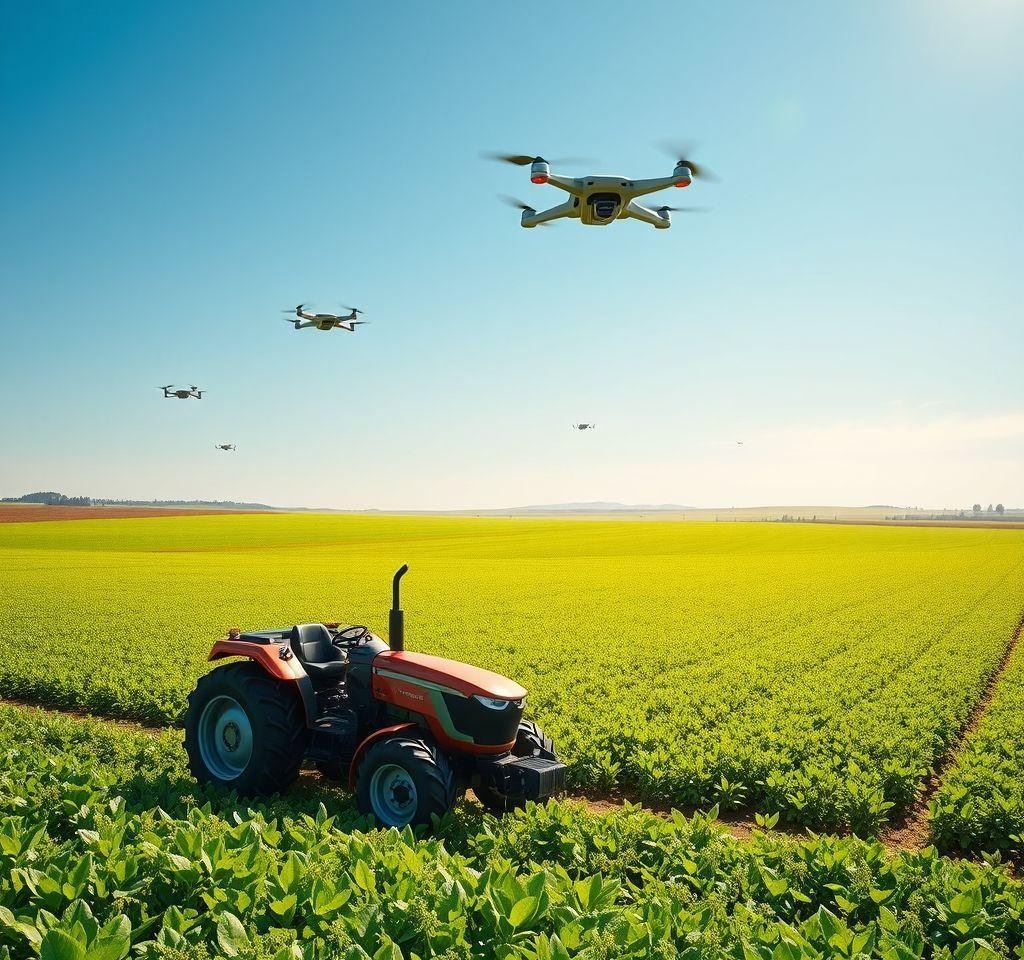Real-Time AI Cybersecurity: Protecting Your Digital Assets in the Age of Intelligent Threats
The digital landscape is constantly evolving, with cyber threats becoming increasingly sophisticated and frequent. Traditional security measures are often insufficient to combat these advanced attacks, necessitating a more proactive and intelligent approach. Real-time AI cybersecurity offers a powerful solution, leveraging the capabilities of artificial intelligence to detect and respond to threats in real-time, before they can cause significant damage.
The Evolving Landscape of Cybersecurity Threats
The Evolving Landscape of Cybersecurity Threats
Cyberattacks are increasingly sophisticated and numerous. Traditional security methods struggle to keep pace. These methods often react to threats, rather than proactively preventing them. This reactive approach leaves systems vulnerable. The sheer volume of attacks overwhelms defenses. Advanced persistent threats (APTs) are particularly challenging. They are designed to evade detection for extended periods. Data breaches are becoming more frequent and costly.
AI is crucial for real-time threat detection. It can analyze vast amounts of data. AI identifies suspicious patterns and anomalies. This allows for immediate responses. AI algorithms adapt to new threats. They learn and improve over time. This dynamic defense is essential. It addresses the ever-changing threat landscape. AI-powered systems provide enhanced protection. They reduce the risk of successful attacks. AI Cybersecurity Defense Mechanisms AI-Powered Cybersecurity Threat Intelligence AI
Introducing Real-Time AI in Cybersecurity
The Evolving Landscape of Cybersecurity Threats
Cyberattacks are increasingly sophisticated and numerous. Traditional security methods struggle to keep pace. These methods often react to threats, rather than proactively preventing them. This reactive approach leaves systems vulnerable. The sheer volume of attacks overwhelms defenses. Advanced persistent threats (APTs) are particularly challenging. They are designed to evade detection for extended periods. Data breaches are becoming more frequent and costly.
AI is crucial for real-time threat detection. It can analyze vast amounts of data. AI identifies suspicious patterns and anomalies. This allows for immediate responses. AI algorithms adapt to new threats. They learn and improve over time. This dynamic defense is essential. It addresses the ever-changing threat landscape. AI-powered systems provide enhanced protection. They reduce the risk of successful attacks. AI Cybersecurity Defense Mechanisms AI-Powered Cybersecurity Threat Intelligence AI
Real-World Applications of Real-Time AI Cybersecurity
The Evolving Landscape of Cybersecurity Threats
Cyberattacks are increasingly sophisticated and numerous. Traditional security methods struggle to keep pace. These methods often react to threats, rather than proactively preventing them. This reactive approach leaves systems vulnerable. The sheer volume of attacks overwhelms defenses. Advanced persistent threats (APTs) are particularly challenging. They are designed to evade detection for extended periods. Data breaches are becoming more frequent and costly.
AI is crucial for real-time threat detection. It can analyze vast amounts of data. AI identifies suspicious patterns and anomalies. This allows for immediate responses. AI algorithms adapt to new threats. They learn and improve over time. This dynamic defense is essential. It addresses the ever-changing threat landscape. AI-powered systems provide enhanced protection. They reduce the risk of successful attacks. AI Cybersecurity Defense Mechanisms AI-Powered Cybersecurity Threat Intelligence AI
Challenges and Considerations in Implementing Real-Time AI Cybersecurity
The Evolving Landscape of Cybersecurity Threats
Cyberattacks are increasingly sophisticated and numerous. Traditional security methods struggle to keep pace. These methods often react to threats, rather than proactively preventing them. This reactive approach leaves systems vulnerable. The sheer volume of attacks overwhelms defenses. Advanced persistent threats (APTs) are particularly challenging. They are designed to evade detection for extended periods. Data breaches are becoming more frequent and costly.
AI is crucial for real-time threat detection. It can analyze vast amounts of data. AI identifies suspicious patterns and anomalies. This allows for immediate responses. AI algorithms adapt to new threats. They learn and improve over time. This dynamic defense is essential. It addresses the ever-changing threat landscape. AI-powered systems provide enhanced protection. They reduce the risk of successful attacks. AI Cybersecurity Defense Mechanisms AI-Powered Cybersecurity Threat Intelligence AI
The Future of Real-Time AI Cybersecurity
The Evolving Landscape of Cybersecurity Threats
Cyberattacks are increasingly sophisticated and numerous. Traditional security methods struggle to keep pace. These methods often react to threats, rather than proactively preventing them. This reactive approach leaves systems vulnerable. The sheer volume of attacks overwhelms defenses. Advanced persistent threats (APTs) are particularly challenging. They are designed to evade detection for extended periods. Data breaches are becoming more frequent and costly.
AI is crucial for real-time threat detection. It can analyze vast amounts of data. AI identifies suspicious patterns and anomalies. This allows for immediate responses. AI algorithms adapt to new threats. They learn and improve over time. This dynamic defense is essential. It addresses the ever-changing threat landscape. AI-powered systems provide enhanced protection. They reduce the risk of successful attacks. AI Cybersecurity Defense Mechanisms AI-Powered Cybersecurity Threat Intelligence AI
The Evolving Landscape of Cybersecurity Threats
Introducing Real-Time AI in Cybersecurity
Real-time AI algorithms analyze massive datasets to detect anomalies and threats. They process network traffic, system logs, and user behavior data. Machine learning models identify patterns indicative of attacks. Deep learning algorithms analyze complex relationships in data. Natural language processing (NLP) examines textual data, such as emails and chat logs. These techniques work together. They enhance cybersecurity defenses significantly. They provide faster response times. This reduces the impact of successful breaches. AI also helps prioritize alerts. This focuses resources on critical threats. AI-powered systems automate responses. They contain threats more effectively.
AI Cybersecurity Defense Mechanisms AI-Powered Cybersecurity AI-Driven Threat Detection
Introducing Real-Time AI in Cybersecurity
Introducing Real-Time AI in Cybersecurity
Real-time AI algorithms analyze massive datasets to detect anomalies and threats. They process network traffic, system logs, and user behavior data. Machine learning models identify patterns indicative of attacks. Deep learning algorithms analyze complex relationships in data. Natural language processing (NLP) examines textual data, such as emails and chat logs. These techniques work together. They enhance cybersecurity defenses significantly. They provide faster response times. This reduces the impact of successful breaches. AI also helps prioritize alerts. This focuses resources on critical threats. AI-powered systems automate responses. They contain threats more effectively.
AI Cybersecurity Defense Mechanisms AI-Powered Cybersecurity AI-Driven Threat Detection
Real-World Applications of Real-Time AI Cybersecurity
Introducing Real-Time AI in Cybersecurity
Real-time AI algorithms analyze massive datasets to detect anomalies and threats. They process network traffic, system logs, and user behavior data. Machine learning models identify patterns indicative of attacks. Deep learning algorithms analyze complex relationships in data. Natural language processing (NLP) examines textual data, such as emails and chat logs. These techniques work together. They enhance cybersecurity defenses significantly. They provide faster response times. This reduces the impact of successful breaches. AI also helps prioritize alerts. This focuses resources on critical threats. AI-powered systems automate responses. They contain threats more effectively.
AI Cybersecurity Defense Mechanisms AI-Powered Cybersecurity AI-Driven Threat Detection
Challenges and Considerations in Implementing Real-Time AI Cybersecurity
Introducing Real-Time AI in Cybersecurity
Real-time AI algorithms analyze massive datasets to detect anomalies and threats. They process network traffic, system logs, and user behavior data. Machine learning models identify patterns indicative of attacks. Deep learning algorithms analyze complex relationships in data. Natural language processing (NLP) examines textual data, such as emails and chat logs. These techniques work together. They enhance cybersecurity defenses significantly. They provide faster response times. This reduces the impact of successful breaches. AI also helps prioritize alerts. This focuses resources on critical threats. AI-powered systems automate responses. They contain threats more effectively.
AI Cybersecurity Defense Mechanisms AI-Powered Cybersecurity AI-Driven Threat Detection
The Future of Real-Time AI Cybersecurity
Introducing Real-Time AI in Cybersecurity
Real-time AI algorithms analyze massive datasets to detect anomalies and threats. They process network traffic, system logs, and user behavior data. Machine learning models identify patterns indicative of attacks. Deep learning algorithms analyze complex relationships in data. Natural language processing (NLP) examines textual data, such as emails and chat logs. These techniques work together. They enhance cybersecurity defenses significantly. They provide faster response times. This reduces the impact of successful breaches. AI also helps prioritize alerts. This focuses resources on critical threats. AI-powered systems automate responses. They contain threats more effectively.
AI Cybersecurity Defense Mechanisms AI-Powered Cybersecurity AI-Driven Threat Detection
The Evolving Landscape of Cybersecurity Threats
Real-World Applications of Real-Time AI Cybersecurity
Real-time AI significantly enhances cybersecurity. AI improves threat detection accuracy. It increases response speed. It strengthens overall security. Intrusion detection systems use AI to analyze network traffic. They identify malicious activity in real-time. Malware analysis tools use AI to quickly identify malware. They classify its type and potential impact. AI-powered systems detect phishing attempts. They analyze emails and websites for suspicious content. Vulnerability management tools use AI to scan systems. They detect and prioritize vulnerabilities. This allows for faster patching and mitigation. AI provides a more proactive and effective security posture.
Threat Intelligence AI AI-Driven Threat Detection AI-Powered Cybersecurity
Introducing Real-Time AI in Cybersecurity
Real-World Applications of Real-Time AI Cybersecurity
Real-time AI significantly enhances cybersecurity. AI improves threat detection accuracy. It increases response speed. It strengthens overall security. Intrusion detection systems use AI to analyze network traffic. They identify malicious activity in real-time. Malware analysis tools use AI to quickly identify malware. They classify its type and potential impact. AI-powered systems detect phishing attempts. They analyze emails and websites for suspicious content. Vulnerability management tools use AI to scan systems. They detect and prioritize vulnerabilities. This allows for faster patching and mitigation. AI provides a more proactive and effective security posture.
Threat Intelligence AI AI-Driven Threat Detection AI-Powered Cybersecurity
Real-World Applications of Real-Time AI Cybersecurity
Real-World Applications of Real-Time AI Cybersecurity
Real-time AI significantly enhances cybersecurity. AI improves threat detection accuracy. It increases response speed. It strengthens overall security. Intrusion detection systems use AI to analyze network traffic. They identify malicious activity in real-time. Malware analysis tools use AI to quickly identify malware. They classify its type and potential impact. AI-powered systems detect phishing attempts. They analyze emails and websites for suspicious content. Vulnerability management tools use AI to scan systems. They detect and prioritize vulnerabilities. This allows for faster patching and mitigation. AI provides a more proactive and effective security posture.
Threat Intelligence AI AI-Driven Threat Detection AI-Powered Cybersecurity
Challenges and Considerations in Implementing Real-Time AI Cybersecurity
Real-World Applications of Real-Time AI Cybersecurity
Real-time AI significantly enhances cybersecurity. AI improves threat detection accuracy. It increases response speed. It strengthens overall security. Intrusion detection systems use AI to analyze network traffic. They identify malicious activity in real-time. Malware analysis tools use AI to quickly identify malware. They classify its type and potential impact. AI-powered systems detect phishing attempts. They analyze emails and websites for suspicious content. Vulnerability management tools use AI to scan systems. They detect and prioritize vulnerabilities. This allows for faster patching and mitigation. AI provides a more proactive and effective security posture.
Threat Intelligence AI AI-Driven Threat Detection AI-Powered Cybersecurity
The Future of Real-Time AI Cybersecurity
Real-World Applications of Real-Time AI Cybersecurity
Real-time AI significantly enhances cybersecurity. AI improves threat detection accuracy. It increases response speed. It strengthens overall security. Intrusion detection systems use AI to analyze network traffic. They identify malicious activity in real-time. Malware analysis tools use AI to quickly identify malware. They classify its type and potential impact. AI-powered systems detect phishing attempts. They analyze emails and websites for suspicious content. Vulnerability management tools use AI to scan systems. They detect and prioritize vulnerabilities. This allows for faster patching and mitigation. AI provides a more proactive and effective security posture.
Threat Intelligence AI AI-Driven Threat Detection AI-Powered Cybersecurity
The Evolving Landscape of Cybersecurity Threats
Challenges and Considerations in Implementing Real-Time AI Cybersecurity
Implementing real-time AI cybersecurity presents several challenges. Data privacy is paramount. AI systems require extensive datasets for training. Model explainability is crucial for trust and accountability. Adversarial attacks can exploit AI weaknesses. These challenges require careful consideration.
Data privacy regulations must be followed. Data anonymization and differential privacy techniques are useful. Smaller, focused datasets can be used effectively. They may be preferable to massive, less targeted ones. Explainable AI (XAI) techniques enhance transparency. They improve user understanding. Robust defenses are needed against adversarial attacks. Regular model testing and updates are critical. Responsible AI deployment requires careful planning and ongoing monitoring. AI Data Privacy AI Explainability AI Ethics
Introducing Real-Time AI in Cybersecurity
Challenges and Considerations in Implementing Real-Time AI Cybersecurity
Implementing real-time AI cybersecurity presents several challenges. Data privacy is paramount. AI systems require extensive datasets for training. Model explainability is crucial for trust and accountability. Adversarial attacks can exploit AI weaknesses. These challenges require careful consideration.
Data privacy regulations must be followed. Data anonymization and differential privacy techniques are useful. Smaller, focused datasets can be used effectively. They may be preferable to massive, less targeted ones. Explainable AI (XAI) techniques enhance transparency. They improve user understanding. Robust defenses are needed against adversarial attacks. Regular model testing and updates are critical. Responsible AI deployment requires careful planning and ongoing monitoring. AI Data Privacy AI Explainability AI Ethics
Real-World Applications of Real-Time AI Cybersecurity
Challenges and Considerations in Implementing Real-Time AI Cybersecurity
Implementing real-time AI cybersecurity presents several challenges. Data privacy is paramount. AI systems require extensive datasets for training. Model explainability is crucial for trust and accountability. Adversarial attacks can exploit AI weaknesses. These challenges require careful consideration.
Data privacy regulations must be followed. Data anonymization and differential privacy techniques are useful. Smaller, focused datasets can be used effectively. They may be preferable to massive, less targeted ones. Explainable AI (XAI) techniques enhance transparency. They improve user understanding. Robust defenses are needed against adversarial attacks. Regular model testing and updates are critical. Responsible AI deployment requires careful planning and ongoing monitoring. AI Data Privacy AI Explainability AI Ethics
Challenges and Considerations in Implementing Real-Time AI Cybersecurity
Challenges and Considerations in Implementing Real-Time AI Cybersecurity
Implementing real-time AI cybersecurity presents several challenges. Data privacy is paramount. AI systems require extensive datasets for training. Model explainability is crucial for trust and accountability. Adversarial attacks can exploit AI weaknesses. These challenges require careful consideration.
Data privacy regulations must be followed. Data anonymization and differential privacy techniques are useful. Smaller, focused datasets can be used effectively. They may be preferable to massive, less targeted ones. Explainable AI (XAI) techniques enhance transparency. They improve user understanding. Robust defenses are needed against adversarial attacks. Regular model testing and updates are critical. Responsible AI deployment requires careful planning and ongoing monitoring. AI Data Privacy AI Explainability AI Ethics
The Future of Real-Time AI Cybersecurity
Challenges and Considerations in Implementing Real-Time AI Cybersecurity
Implementing real-time AI cybersecurity presents several challenges. Data privacy is paramount. AI systems require extensive datasets for training. Model explainability is crucial for trust and accountability. Adversarial attacks can exploit AI weaknesses. These challenges require careful consideration.
Data privacy regulations must be followed. Data anonymization and differential privacy techniques are useful. Smaller, focused datasets can be used effectively. They may be preferable to massive, less targeted ones. Explainable AI (XAI) techniques enhance transparency. They improve user understanding. Robust defenses are needed against adversarial attacks. Regular model testing and updates are critical. Responsible AI deployment requires careful planning and ongoing monitoring. AI Data Privacy AI Explainability AI Ethics
The Evolving Landscape of Cybersecurity Threats
The Future of Real-Time AI Cybersecurity
Future real-time AI cybersecurity will see significant advancements. AI algorithms will become more sophisticated. They will better detect and respond to threats. AI will integrate more seamlessly with existing security tools. This creates a more comprehensive security system. AI-driven automation will increase. It will reduce the burden on human security teams. This automation will improve efficiency and response times.
These trends will transform cybersecurity. Security strategies will become more proactive. They will focus on prevention, not just reaction. Security practices will rely more on automated systems. Human expertise will focus on strategic decision-making and complex problem-solving. The overall security posture will improve significantly. AI will be vital for maintaining security in the future. Future of Cybersecurity Future of AI Evolution of AI
Introducing Real-Time AI in Cybersecurity
The Future of Real-Time AI Cybersecurity
Future real-time AI cybersecurity will see significant advancements. AI algorithms will become more sophisticated. They will better detect and respond to threats. AI will integrate more seamlessly with existing security tools. This creates a more comprehensive security system. AI-driven automation will increase. It will reduce the burden on human security teams. This automation will improve efficiency and response times.
These trends will transform cybersecurity. Security strategies will become more proactive. They will focus on prevention, not just reaction. Security practices will rely more on automated systems. Human expertise will focus on strategic decision-making and complex problem-solving. The overall security posture will improve significantly. AI will be vital for maintaining security in the future. Future of Cybersecurity Future of AI Evolution of AI
Real-World Applications of Real-Time AI Cybersecurity
The Future of Real-Time AI Cybersecurity
Future real-time AI cybersecurity will see significant advancements. AI algorithms will become more sophisticated. They will better detect and respond to threats. AI will integrate more seamlessly with existing security tools. This creates a more comprehensive security system. AI-driven automation will increase. It will reduce the burden on human security teams. This automation will improve efficiency and response times.
These trends will transform cybersecurity. Security strategies will become more proactive. They will focus on prevention, not just reaction. Security practices will rely more on automated systems. Human expertise will focus on strategic decision-making and complex problem-solving. The overall security posture will improve significantly. AI will be vital for maintaining security in the future. Future of Cybersecurity Future of AI Evolution of AI
Challenges and Considerations in Implementing Real-Time AI Cybersecurity
The Future of Real-Time AI Cybersecurity
Future real-time AI cybersecurity will see significant advancements. AI algorithms will become more sophisticated. They will better detect and respond to threats. AI will integrate more seamlessly with existing security tools. This creates a more comprehensive security system. AI-driven automation will increase. It will reduce the burden on human security teams. This automation will improve efficiency and response times.
These trends will transform cybersecurity. Security strategies will become more proactive. They will focus on prevention, not just reaction. Security practices will rely more on automated systems. Human expertise will focus on strategic decision-making and complex problem-solving. The overall security posture will improve significantly. AI will be vital for maintaining security in the future. Future of Cybersecurity Future of AI Evolution of AI
The Future of Real-Time AI Cybersecurity
The Future of Real-Time AI Cybersecurity
Future real-time AI cybersecurity will see significant advancements. AI algorithms will become more sophisticated. They will better detect and respond to threats. AI will integrate more seamlessly with existing security tools. This creates a more comprehensive security system. AI-driven automation will increase. It will reduce the burden on human security teams. This automation will improve efficiency and response times.
These trends will transform cybersecurity. Security strategies will become more proactive. They will focus on prevention, not just reaction. Security practices will rely more on automated systems. Human expertise will focus on strategic decision-making and complex problem-solving. The overall security posture will improve significantly. AI will be vital for maintaining security in the future. Future of Cybersecurity Future of AI Evolution of AI
Final Words
Real-time AI cybersecurity is no longer a futuristic concept but a critical necessity for organizations of all sizes. By leveraging AI’s power to analyze data, identify threats, and automate responses, businesses can significantly enhance their security posture and protect themselves against the ever-growing threat landscape. Embracing real-time AI solutions is a crucial step towards a more secure digital future.




